The Role and Influence of Light in Paintings
Light is not just a mere physical phenomenon; it is the very essence that breathes life into a painting. When you gaze upon a canvas, what captures your attention first? Is it the vibrant colors, the intricate details, or perhaps the way light dances across the surface? Light plays a crucial role in shaping our perception of art, influencing not only how we see colors and forms but also how we feel about the artwork. Just as a stage director uses lighting to enhance a scene's mood, artists manipulate light to evoke emotions and guide the viewer’s eye. This interplay between light and painting is what transforms a simple image into a powerful narrative.
Consider how light can alter our understanding of a scene. For instance, a bright, sunny day can evoke feelings of joy and optimism, while a dimly lit room can create a sense of mystery or melancholy. Artists are acutely aware of this and use light to convey deeper meanings and themes. In essence, light is a storyteller within the artwork, revealing layers of emotion and intention that might otherwise remain hidden. Whether it’s the soft glow of dawn or the stark shadows of twilight, light has the power to transport us to different times and places, inviting us to experience the world through the artist's eyes.
Throughout history, the significance of light has evolved, reflecting the cultural and artistic movements of the time. From the dramatic contrasts of chiaroscuro in the Renaissance to the vibrant interplay of color and light in Impressionism, each style has its unique approach to this vital element. Artists have not only depicted light but have also explored its effects on perception and emotion. This exploration has led to innovative techniques that continue to inspire contemporary artists today.
As we delve deeper into the realms of art, we can see that the influence of light extends beyond mere aesthetics. It serves as a bridge between the viewer and the artwork, fostering a connection that transcends time and space. By understanding the role of light in paintings, we can enhance our appreciation for the techniques employed by artists and the emotional responses they evoke. So, the next time you admire a painting, take a moment to consider the light. What story is it telling? How does it shape your experience of the artwork? The answers may surprise you.
Light serves as a fundamental element in painting, influencing color, form, and depth. Understanding its role can enhance appreciation for artistic techniques and the emotional responses they evoke. It’s fascinating to think about how light can change the entire mood of a piece. For example, the same landscape can appear serene and peaceful in the morning light, while the same scene at dusk can feel haunting and introspective. This transformative quality of light is what makes it such a powerful tool for artists.
Moreover, light can also be symbolic. It often represents ideas such as hope, purity, and divinity. In many cultures, light is associated with knowledge and enlightenment, guiding the viewer towards a deeper understanding of the artwork. By analyzing how different artists use light, we can uncover layers of meaning that enrich our experience. It’s like peeling back the layers of an onion; each layer reveals something new and unexpected.
- Why is light important in painting? Light is crucial as it influences color, form, and depth, shaping our emotional response to the artwork.
- How have different art movements interpreted light? Movements like Renaissance chiaroscuro and Impressionism have unique approaches to light, reflecting their cultural contexts.
- Can light symbolize concepts in art? Yes, light often symbolizes themes like hope, divinity, and knowledge, enhancing the narrative within the artwork.
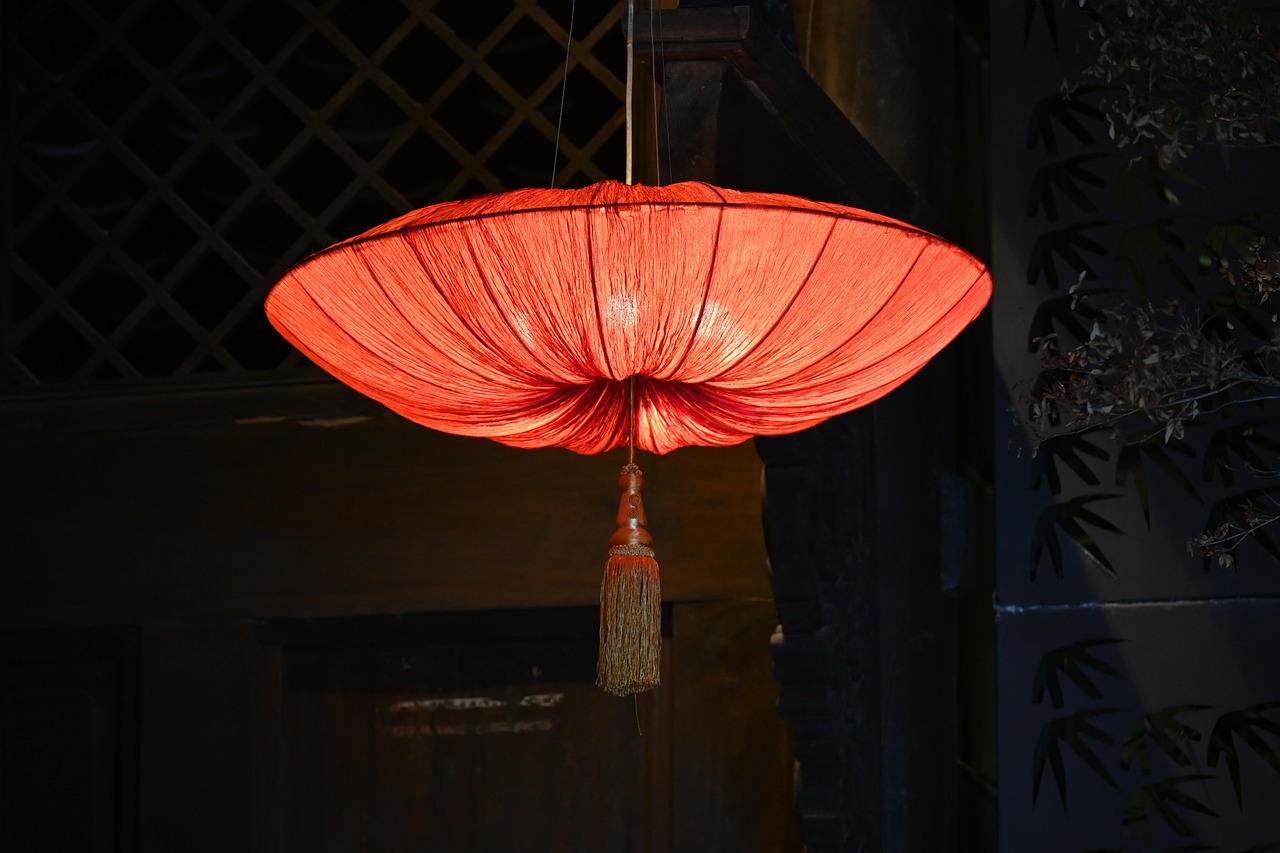
The Importance of Light in Art
Light is not just a physical phenomenon; it is a transformative force in the world of painting. Imagine walking into a gallery, and your eyes are immediately drawn to a canvas where the interplay of light and shadow creates an almost magical atmosphere. This is the power of light! It influences how we perceive colors, shapes, and even the emotional weight of a painting. Whether it's the soft glow of a sunset or the harsh glare of midday sun, light changes everything. It can evoke a sense of calm or stir feelings of excitement and drama.
In essence, light acts as a visual guide that leads our eyes across the canvas. It helps to create a sense of depth, drawing the viewer into the scene. Artists manipulate light to enhance the three-dimensionality of their subjects. For instance, a well-lit portrait can reveal the intricacies of a person's features, while shadows can add mystery and intrigue. The way light interacts with different surfaces—like the reflective quality of water or the rough texture of stone—can also add layers of meaning and context to the artwork.
Moreover, light is crucial in establishing the mood of a piece. A bright, sunny landscape can evoke feelings of joy and serenity, while a dimly lit interior can create a sense of intimacy or foreboding. This emotional resonance is why understanding the role of light in art is essential for appreciating the artist's intent. It’s like reading between the lines of a story; the subtleties of light can reveal much about the narrative and the feelings the artist wishes to convey.
To illustrate the significance of light in art, consider the following table that highlights different types of light effects and their emotional impacts:
| Type of Light Effect | Description | Emotional Impact |
|---|---|---|
| Natural Light | Soft, diffused light that mimics the sun's rays. | Calmness, serenity |
| Harsh Light | Strong, direct light that creates sharp shadows. | Drama, tension |
| Backlighting | Light source behind the subject, creating silhouettes. | Mystery, intrigue |
| Warm Light | Light with a yellow or orange hue, often seen at sunset. | Comfort, nostalgia |
| Cool Light | Light with a blue or green tint, often found in shadowed areas. | Isolation, sadness |
As we delve deeper into the world of art, we begin to realize that light is not merely a tool for visibility; it is an essential ingredient that shapes our experiences and interpretations. So next time you admire a painting, take a moment to consider how the artist has used light to enhance their work. It’s a dance of illumination and shadow that invites us to see beyond the surface and connect with the emotions that lie within.
- Why is light important in painting? Light is crucial as it influences color, depth, and emotional tone, helping to convey the artist's message.
- How do artists manipulate light? Artists use various techniques, such as chiaroscuro and color temperature, to create different effects and evoke emotions.
- What are some common light effects in art? Common effects include natural light, harsh light, backlighting, warm light, and cool light, each creating distinct emotional responses.

Historical Perspectives on Light
Throughout the annals of art history, the interpretation of light has undergone significant transformations, reflecting the evolving perceptions of artists and their societies. From the dramatic chiaroscuro of the Renaissance to the vibrant, fleeting effects captured by the Impressionists, light has always played a crucial role in shaping artistic expression. Each movement brought forth unique techniques and philosophies regarding light, ultimately enriching the viewer's experience and understanding of the artwork.
During the Renaissance, artists like Leonardo da Vinci and Michelangelo began to explore the complexities of light and shadow, using these elements to create a sense of three-dimensionality on a two-dimensional canvas. This period marked a pivotal shift in artistic techniques, where light was not merely a background element but a powerful tool for enhancing realism and emotional depth. The use of chiaroscuro allowed artists to depict figures with a lifelike quality, drawing the viewer's eye to specific focal points within the composition.
As we moved into the Baroque era, the manipulation of light became even more pronounced. Artists such as Caravaggio took chiaroscuro to new heights, employing stark contrasts to evoke drama and tension. This technique not only highlighted the physical attributes of the subjects but also reflected the emotional intensity of the scenes depicted. The interplay of light and shadow in Baroque art created a theatrical atmosphere, making the viewer feel as though they were part of the unfolding narrative.
Fast forward to the 19th century, and we encounter the Impressionists, who revolutionized the way light was perceived in art. Artists like Claude Monet and Pierre-Auguste Renoir focused on capturing the transient effects of natural light, often painting en plein air to observe and depict the changing qualities of light throughout the day. Their innovative techniques involved quick brush strokes and vibrant color palettes, allowing them to convey the ephemeral beauty of light as it danced across landscapes and figures. This shift not only changed the technical approach to painting but also influenced the emotional resonance of the artworks, inviting viewers to experience the momentary nature of life itself.
In summary, the historical perspectives on light in painting reveal a rich tapestry of techniques and philosophies that have evolved over centuries. Each artistic movement has contributed to a deeper understanding of how light can shape perception, evoke emotion, and convey meaning. As we explore these movements, we see that the significance of light transcends mere aesthetics; it is a powerful force that continues to inspire and challenge artists today.
- Why is light important in painting?
Light is crucial in painting as it influences color, form, and depth, enhancing the viewer's emotional response and appreciation of the artwork. - What is chiaroscuro?
Chiaroscuro is a technique that uses strong contrasts between light and dark to create a sense of volume and depth in art, commonly used during the Renaissance. - How did Impressionism change the perception of light?
Impressionism emphasized the effects of natural light on color and atmosphere, capturing fleeting moments and transforming how light is represented in art.
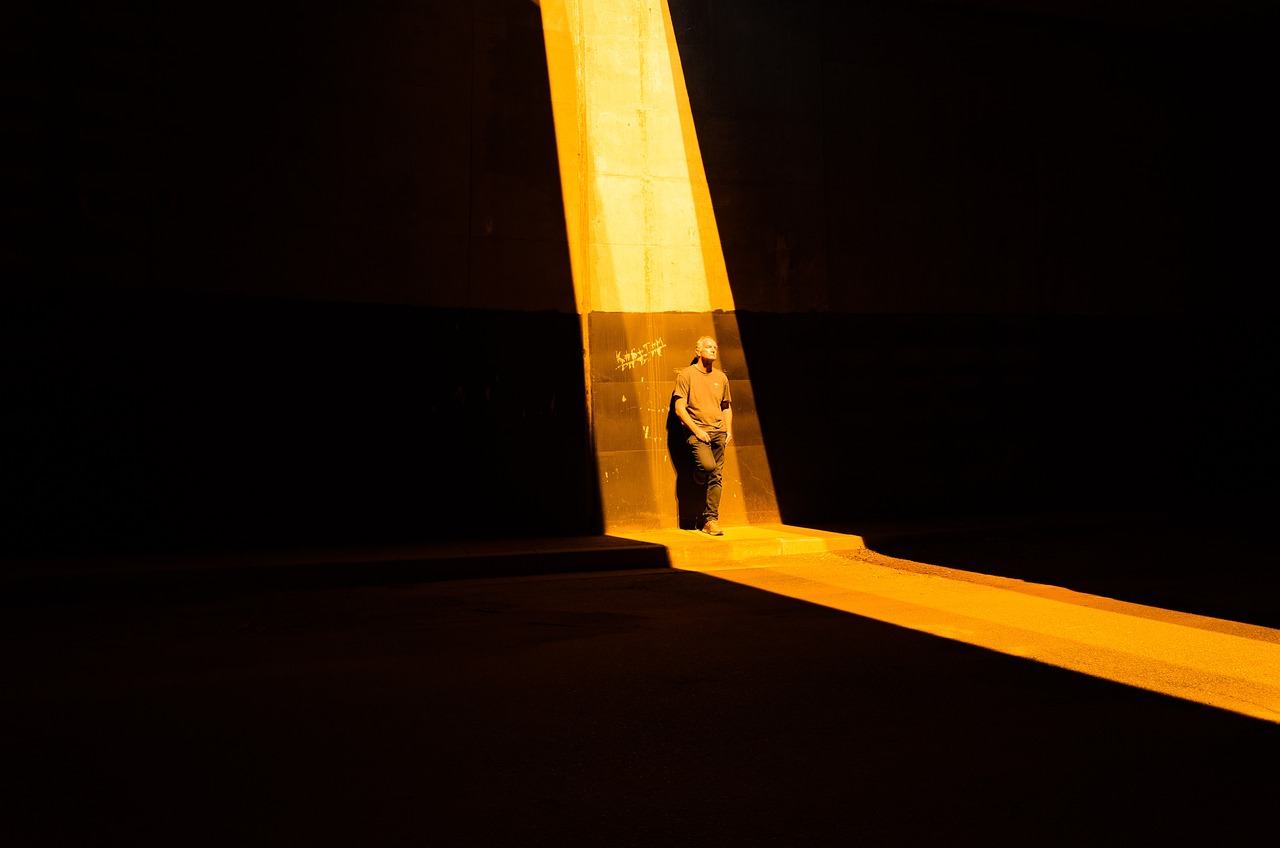
Chiaroscuro Techniques
Chiaroscuro is not just a technique; it's a powerful storytelling tool that artists have wielded for centuries. At its core, chiaroscuro involves the dramatic interplay of light and shadow, creating a sense of volume and depth that can transform a flat canvas into a three-dimensional experience. This technique allows artists to guide the viewer's eye, emphasizing certain elements while obscuring others, much like how a spotlight highlights a performer on stage while the rest of the scene fades into darkness.
The origins of chiaroscuro can be traced back to the Renaissance, where it was championed by masters like Leonardo da Vinci and Michelangelo. They understood that light could be manipulated to create not just realism, but also emotion. For instance, in da Vinci's "The Virgin of the Rocks," the soft transition between light and shadow gives the figures a lifelike quality, making them appear as if they are emerging from the darkness. This technique was revolutionary, allowing artists to convey complex narratives through visual means.
One of the key aspects of chiaroscuro is its ability to create a sense of drama. By using stark contrasts between light and dark, artists can evoke feelings of tension and conflict. Caravaggio, for example, took this to new heights with his theatrical compositions, often placing a single light source in his paintings to create intense contrasts. The result is a striking visual impact that captures the viewer's attention and draws them into the narrative. His work exemplifies how chiaroscuro can be used not just for realism, but as a means of emotional expression.
In modern art, chiaroscuro techniques have evolved but remain relevant. Contemporary artists often experiment with this age-old method, applying it to new themes and mediums. For instance, Francisco Goya used chiaroscuro in his later works to express the turmoil of the human condition, while modern photographers and digital artists have adapted these principles to create striking visual narratives. This ongoing evolution showcases how the essence of chiaroscuro—its ability to manipulate light and shadow—continues to inspire and challenge artists today.
To illustrate the impact of chiaroscuro, consider the following table that contrasts the techniques used by historical and contemporary artists:
| Artist | Period | Technique | Impact |
|---|---|---|---|
| Caravaggio | Baroque | Strong contrasts, single light source | Emphasized drama and emotion |
| Rembrandt | Baroque | Subtle transitions, warm light | Created intimacy in portraits |
| Francisco Goya | Romanticism | Dark backgrounds, stark lighting | Expressed psychological depth |
| Contemporary Artists | Modern | Mixed media, digital manipulation | Explored new themes and narratives |
In conclusion, chiaroscuro techniques are an essential part of the artistic vocabulary. They not only enhance the visual appeal of a painting but also serve as a conduit for deeper emotional and narrative expression. Whether in the hands of a Renaissance master or a contemporary innovator, the play of light and shadow continues to captivate and inspire, reminding us of the profound impact that light can have in the world of art.
- What is chiaroscuro?
Chiaroscuro is a technique used in painting that emphasizes the contrast between light and dark to create a sense of volume and depth. - Which artists are known for their use of chiaroscuro?
Famous artists like Caravaggio and Rembrandt are renowned for their mastery of chiaroscuro techniques. - How has chiaroscuro evolved in modern art?
Contemporary artists adapt chiaroscuro principles to explore new themes and mediums, showcasing its ongoing relevance in art.
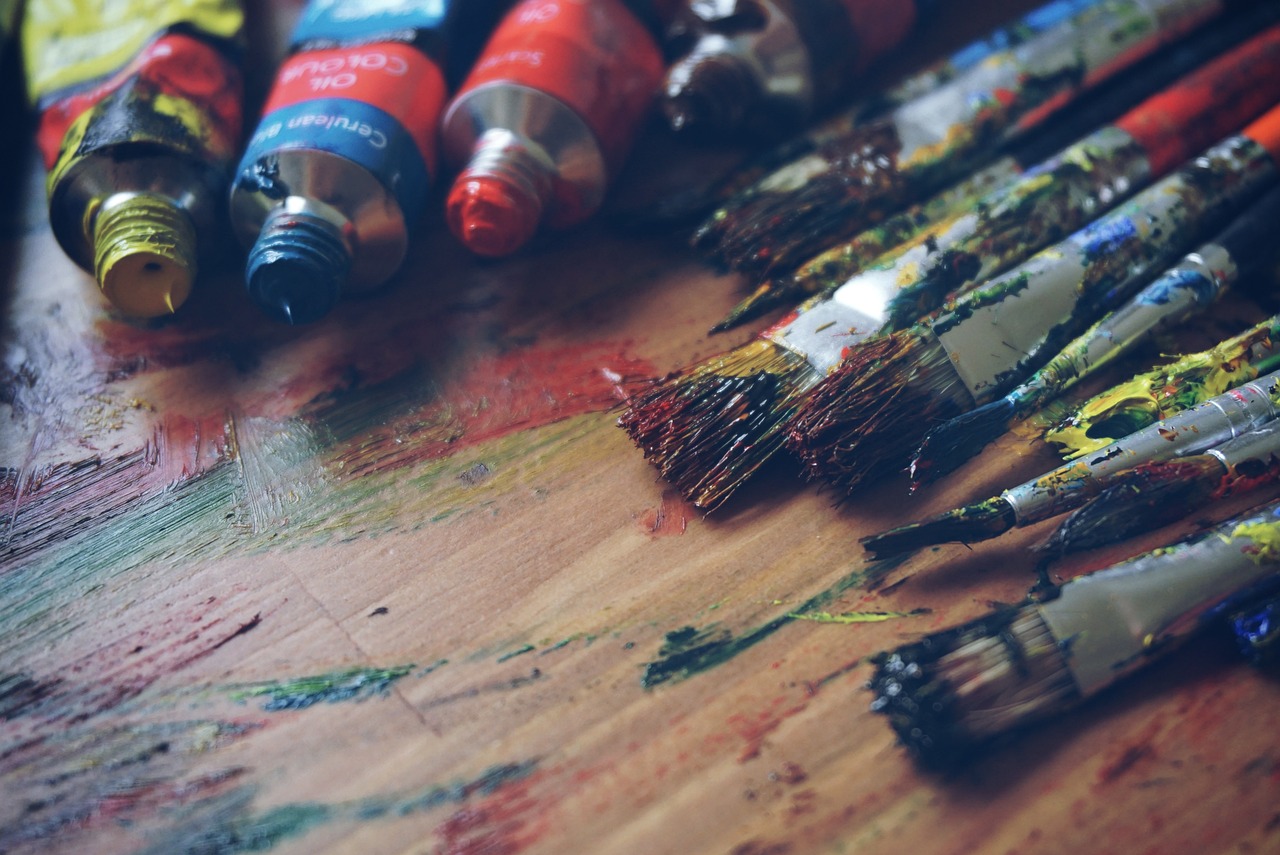
Famous Chiaroscuro Artists
When we think of chiaroscuro, a few iconic names inevitably come to mind, each of whom has left an indelible mark on the world of art. These artists harnessed the power of light and shadow to create dramatic effects that not only enhanced the visual impact of their works but also conveyed deep emotional narratives. Among the most celebrated is Caravaggio, whose mastery of chiaroscuro is unparalleled. His paintings are renowned for their stark contrasts, where the interplay of light and dark draws the viewer's eye to the focal points of his compositions, often highlighting the tension and drama of the scenes depicted.
Another titan of this technique is Rembrandt, whose ability to manipulate light to reveal the inner lives of his subjects is nothing short of extraordinary. In his portraits, the soft illumination that bathes his subjects creates an intimate atmosphere, inviting viewers to connect with the emotions portrayed. Rembrandt's use of chiaroscuro not only adds depth to his figures but also enhances the storytelling aspect of his art, making his paintings resonate on multiple levels.
Beyond these masters of the past, contemporary artists are also exploring chiaroscuro, adapting its principles to reflect modern themes and mediums. For instance, artists like Lucian Freud have incorporated chiaroscuro into their works to evoke a sense of realism and emotional depth, bridging the gap between historical techniques and contemporary expression. The ongoing evolution of chiaroscuro in art demonstrates its enduring relevance and the timeless nature of light as a tool for communication and expression.
To appreciate the full impact of these artists, it’s essential to consider how their unique interpretations of light and shadow have influenced the trajectory of art history. Here’s a brief overview of some famous chiaroscuro artists and their contributions:
| Artist | Notable Works | Contribution to Chiaroscuro |
|---|---|---|
| Caravaggio | The Calling of Saint Matthew, Judith Beheading Holofernes | Innovative use of dramatic lighting to enhance emotional intensity. |
| Rembrandt | The Night Watch, Self-Portrait with Two Circles | Soft, natural light that creates intimacy and depth in portraits. |
| Lucian Freud | Benefits Supervisor Sleeping, Naked Portrait | Modern adaptation of chiaroscuro to convey realism and emotional depth. |
In conclusion, the legacy of these famous chiaroscuro artists continues to inspire and influence both budding and established artists today. Their innovative techniques and emotional depth remind us that light is not just a physical phenomenon in art; it is a powerful medium for storytelling and expression.
- What is chiaroscuro? Chiaroscuro refers to the use of strong contrasts between light and dark to give the illusion of volume in modeling three-dimensional objects and figures.
- Which artists are known for their use of chiaroscuro? Notable artists include Caravaggio, Rembrandt, and Lucian Freud, each of whom has made significant contributions to this technique.
- How does light influence the emotional tone of a painting? Artists manipulate light to evoke specific feelings, using brightness to convey joy or hope and shadows to express sadness or drama.
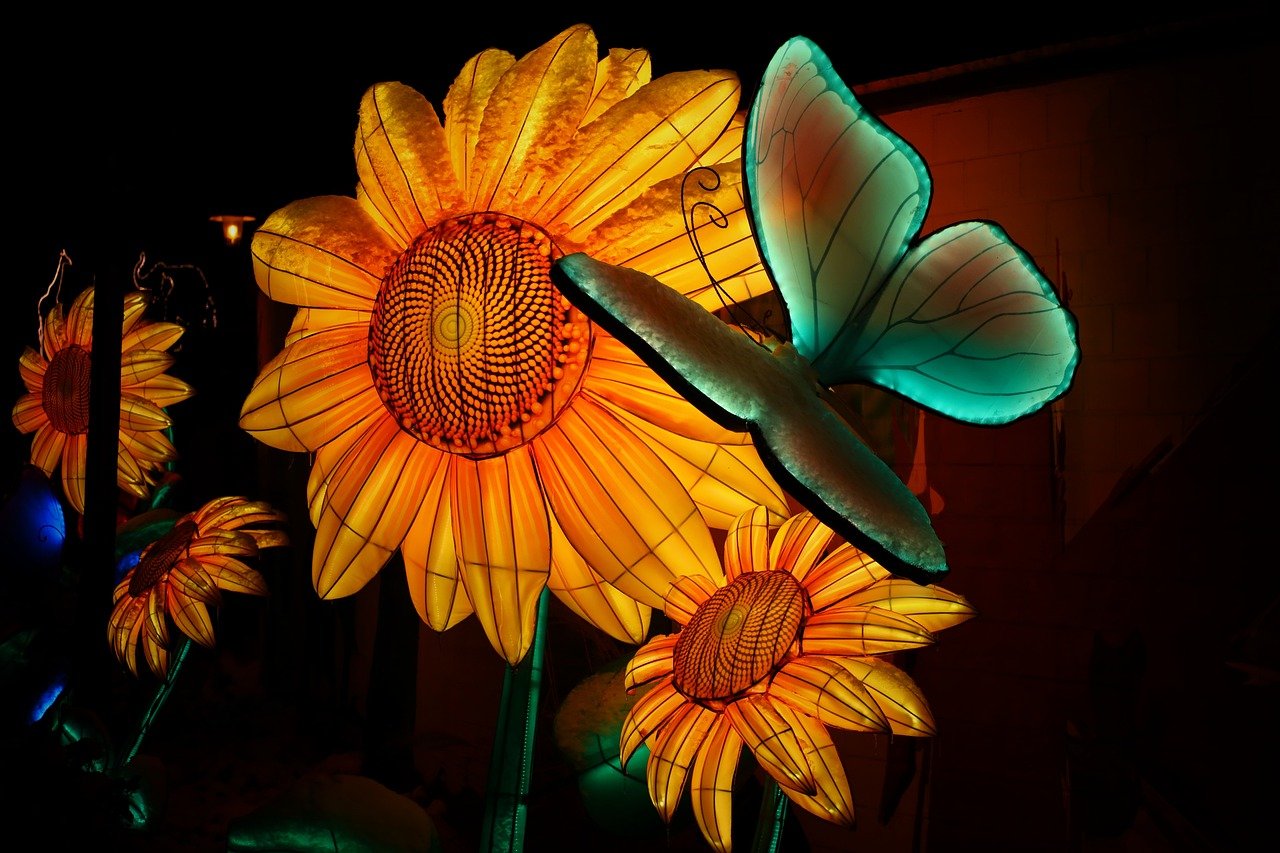
Modern Applications of Chiaroscuro
In the world of contemporary art, the chiaroscuro technique has not only survived but thrived, adapting to modern themes and mediums. Artists today are exploring the interplay of light and shadow in innovative ways, using technology and new materials to push the boundaries of this classic technique. For instance, digital artists are employing software to create stunning contrasts that mimic traditional chiaroscuro, while photographers use lighting techniques to evoke the same depth and drama found in classical paintings.
One fascinating aspect of modern chiaroscuro is how artists incorporate it into mixed media works. By combining painting, photography, and even sculpture, they create multidimensional pieces that challenge the viewer's perception. This blend of mediums allows for a richer exploration of light, as the interaction between different materials can produce unexpected effects. For example, an artist might use a translucent layer of paint over a dark background to create a glowing effect, reminiscent of the divine light often depicted in religious art.
Moreover, the rise of social media platforms has transformed how artists share their work, leading to a broader appreciation of chiaroscuro techniques. Artists can now showcase their processes through time-lapse videos, revealing how they manipulate light and shadow to achieve their desired effects. This transparency not only educates the audience but also inspires aspiring artists to experiment with chiaroscuro in their own practices.
As we delve deeper into the modern applications of chiaroscuro, it's essential to recognize its emotional impact. Artists today are adept at using light to convey complex feelings, from joy to melancholy. For instance, in a recent exhibition, one artist used stark contrasts to depict the emotional turmoil of urban life, drawing viewers into a visceral experience that resonates on multiple levels. The manipulation of light and shadow in these works serves as a powerful narrative device, inviting the audience to explore their emotions and interpretations.
In conclusion, the evolution of chiaroscuro in modern art reflects a dynamic dialogue between tradition and innovation. Whether through digital platforms, mixed media, or emotional storytelling, contemporary artists continue to harness the power of light in ways that captivate and inspire. This ongoing exploration not only honors the masters of the past but also paves the way for future generations to discover the profound influence of light in art.
- What is chiaroscuro? Chiaroscuro is a technique that uses strong contrasts between light and dark to create a sense of volume and depth in artwork.
- How is chiaroscuro used in modern art? Modern artists use chiaroscuro in various ways, including digital art, mixed media, and photography, to explore themes and emotions.
- Who are some famous artists known for their use of chiaroscuro? Renowned artists like Caravaggio and Rembrandt are famous for their mastery of chiaroscuro, influencing countless artists throughout history.
- Can chiaroscuro be applied to digital art? Absolutely! Digital artists often employ chiaroscuro techniques to create depth and drama in their work, just like traditional painters.

Impressionism and Natural Light
Impressionism, a revolutionary art movement that emerged in the late 19th century, fundamentally changed how artists approached light and color. Unlike their predecessors, Impressionist painters sought to capture the fleeting effects of natural light on their subjects, emphasizing the transient qualities of atmosphere and time. This was a radical departure from the meticulously detailed and often dark palettes of the previous art movements. Artists like Claude Monet and Pierre-Auguste Renoir were at the forefront of this movement, using quick brush strokes and vibrant colors to convey the essence of a moment rather than a precise representation.
One of the hallmark techniques of Impressionism was the use of broken color, where artists applied small strokes of pure color side by side, allowing the viewer's eye to blend them from a distance. This technique not only created a shimmering effect that mimicked the play of light on surfaces but also introduced a sense of movement and life into their works. For instance, Monet’s series of paintings depicting the Water Lilies in his garden at Giverny showcases how light changes throughout the day, reflecting different moods and atmospheres.
The Impressionists were also keen observers of the world around them, often painting en plein air (outdoors) to capture the immediacy of the moment. This practice allowed them to study how light interacted with different environments, from bustling urban scenes to serene landscapes. The result was a body of work that celebrated the beauty of everyday life, infused with a sense of spontaneity and joy. The famous painting Impression, Sunrise by Monet, which gave the movement its name, exemplifies this approach, featuring a hazy sunrise over the port of Le Havre that captures the essence of a moment rather than its details.
Moreover, the Impressionists were pioneers in exploring the effects of different times of day and weather conditions on their subjects. They understood that light could transform a scene dramatically, altering colors and shadows. For example, Renoir's Dance at Le Moulin de la Galette brilliantly captures the dappled sunlight filtering through the trees, creating a lively and festive atmosphere. This ability to portray light not only enhanced the visual appeal of their paintings but also evoked an emotional response from the viewer, inviting them to experience the joy and vibrancy of the moment.
In summary, the exploration of natural light by Impressionist artists was not just a technical innovation; it was a profound shift in artistic philosophy. By prioritizing the sensory experience of light over the rigid adherence to form and detail, they opened the door for future generations of artists to experiment with color, texture, and emotion. The legacy of Impressionism continues to influence contemporary art, reminding us of the power of light to shape our perception and experience of the world.
- What is Impressionism? Impressionism is an art movement that began in the late 19th century, characterized by a focus on capturing light and its changing qualities, often through quick brush strokes and vibrant colors.
- Who were the key artists of the Impressionist movement? Some of the most notable Impressionist artists include Claude Monet, Pierre-Auguste Renoir, Edgar Degas, and Camille Pissarro.
- How did Impressionists use light in their paintings? Impressionist artists used natural light to create vibrant colors and to portray the effects of light on their subjects, often painting outdoors to capture the moment's essence.
- What techniques did Impressionists develop? Techniques such as broken color, quick brush strokes, and plein air painting were developed to convey the fleeting effects of light and atmosphere.

Symbolism of Light in Paintings
Light is not just a physical phenomenon; it holds profound symbolic meanings in the realm of painting. Artists have long harnessed the power of light to convey deeper messages, emotions, and themes. For instance, light often represents hope, divinity, or enlightenment. When we analyze the use of light in various artworks, we can uncover layers of meaning that enrich our understanding of the artist's intent.
One of the most prevalent themes associated with light is its representation of hope and renewal. This symbolism is particularly evident in religious and spiritual art, where light frequently signifies the presence of the divine or a guiding force. For example, in many depictions of saints, a radiant light often surrounds them, suggesting their connection to a higher power. This use of light not only draws the viewer's attention but also evokes a sense of comfort and reassurance.
Moreover, light is a powerful tool for evoking emotion. Artists manipulate brightness and shadow to influence how we feel when we look at their work. A bright, sunlit scene might evoke feelings of joy and warmth, while a dimly lit composition could elicit feelings of melancholy or introspection. This emotional impact is crucial in how we engage with art, as it can transform a simple visual experience into a profound emotional journey. For instance, consider the works of J.M.W. Turner, where the interplay of light and color creates a sense of movement and emotion that resonates deeply with viewers.
In addition to hope and emotion, light can also symbolize knowledge and enlightenment. In many artworks, a beam of light illuminating a figure or an object can represent the acquisition of knowledge or a moment of realization. This is often seen in classical art, where light serves to highlight important aspects of the composition, guiding the viewer's eye to what is most significant. The use of light in this way not only enhances the visual appeal of the painting but also reinforces its narrative and thematic elements.
To illustrate the various symbolic meanings attributed to light in paintings, we can take a closer look at some famous artworks:
| Artwork | Artist | Symbolism of Light |
|---|---|---|
| The Calling of St. Matthew | Caravaggio | Divine intervention and guidance |
| Impression, Sunrise | Claude Monet | Hope and new beginnings |
| The School of Athens | Raphael | Knowledge and enlightenment |
| The Night Watch | Rembrandt | Emotion and drama |
As we can see from this table, the use of light varies significantly among different artists and periods, yet its symbolic meanings remain a constant thread throughout art history. Whether it signifies hope, emotion, or enlightenment, light plays an essential role in shaping our interpretation of a painting.
- Why is light important in paintings? Light is crucial as it influences color, form, and depth, enhancing the overall perception of the artwork.
- What does light symbolize in art? Light can symbolize various themes, including hope, divinity, and enlightenment, depending on the context of the artwork.
- How do artists manipulate light to evoke emotions? Artists use techniques such as chiaroscuro and color contrasts to create emotional responses in viewers.

Light as a Symbol of Hope
In the vast universe of art, light often emerges as a powerful symbol of hope, illuminating the canvas not just in a literal sense, but also in a metaphorical way. This idea is deeply rooted in various cultures and religions, where light is frequently associated with divine presence and guidance. Have you ever gazed at a painting and felt an overwhelming sense of optimism just from the way light spills across the scene? That’s the magic of how artists manipulate light to convey profound emotions and messages.
Throughout history, many artists have employed light to evoke feelings of hope and renewal. For instance, in religious paintings, light often symbolizes the divine or the sacred. Consider the iconic works of artists like Giotto or Caravaggio, where beams of light frequently illuminate figures, suggesting a connection to something greater than themselves. This use of light not only highlights the subjects but also imbues the artwork with a sense of spiritual upliftment.
Moreover, light can represent the idea of enlightenment, both intellectually and spiritually. In many pieces, the transition from darkness to light signifies the journey from ignorance to knowledge, or despair to hope. For example, in the painting The Calling of Saint Matthew by Caravaggio, the dramatic use of light draws the viewer’s attention to the moment of divine intervention, emphasizing the transformative power of faith and hope.
Artists often use contrasting elements to enhance this symbolism. The juxtaposition of light against dark can create a narrative of struggle and triumph, where light emerges victorious. This technique not only captivates the viewer’s eye but also resonates with our innate desire for hope amidst adversity. Just like a sunrise after a long night, the emergence of light in a painting can evoke feelings of renewal and optimism.
To illustrate the significance of light as a symbol of hope in art, let’s explore some key themes:
- Divine Presence: Many artworks depict light as a manifestation of the divine, suggesting that hope is always within reach.
- Transformation: The transition from dark to light represents personal growth, renewal, and the possibility of change.
- Guidance: Light often serves as a beacon, guiding the viewer’s eye and heart toward a message of hope and positivity.
In conclusion, the symbolism of light in art transcends mere aesthetics. It is a profound representation of hope, renewal, and divine guidance. As we engage with these artworks, we are invited to reflect on our own journeys and the moments of light that have illuminated our paths. So, the next time you find yourself in front of a painting, take a moment to appreciate how light not only shapes the visual experience but also enriches the emotional landscape of the piece.
- What is the significance of light in paintings?
Light plays a crucial role in defining the mood, depth, and emotional impact of a painting. It can symbolize hope, divine presence, and transformation. - How do artists use light to convey emotions?
Artists manipulate light and shadow to evoke specific feelings, creating contrasts that can represent struggle, triumph, or serenity. - Can the symbolism of light vary across different cultures?
Yes, the symbolism of light can differ significantly, with various cultures attributing unique meanings to light based on their beliefs and traditions.
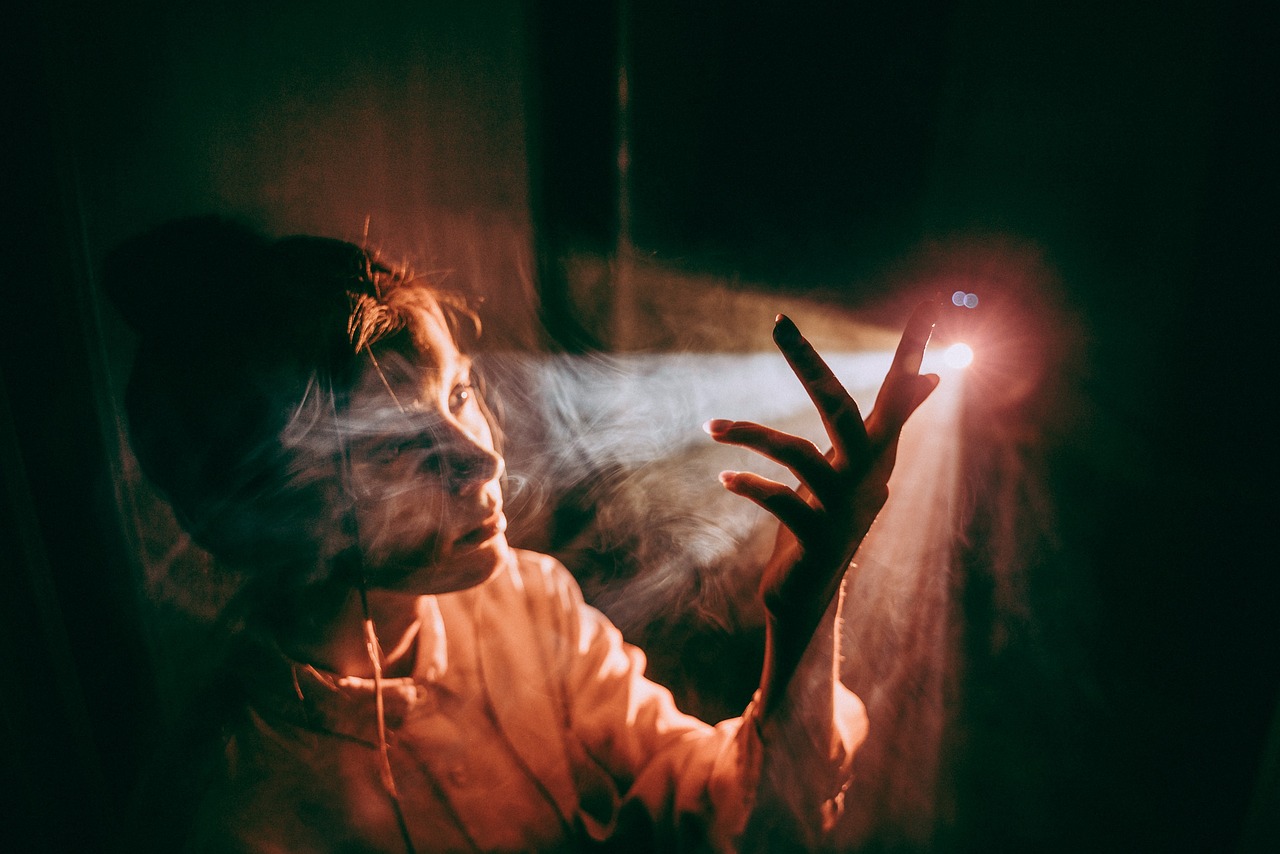
Light and Emotion
Light is not just a physical phenomenon; it’s an emotional catalyst in the world of art. Artists have long understood that the way light interacts with their subjects can profoundly affect the viewer's emotional response. Imagine walking into a gallery and being immediately drawn to a painting that seems to glow from within. That glow, often achieved through the careful manipulation of light, can evoke feelings of warmth, joy, or even nostalgia. Have you ever noticed how a bright, sunlit scene can lift your spirits, while a dimly lit, shadowy corner might leave you feeling uneasy? This is the magic of light in art—it has the power to shape our emotions.
One of the most fascinating aspects of how light influences emotion is its ability to create atmosphere. For instance, a painting drenched in golden sunlight can evoke feelings of happiness and tranquility, while a scene shrouded in darkness may convey sadness or mystery. Artists like Vincent van Gogh and Edward Hopper expertly utilized light to communicate complex emotions. Van Gogh's "Starry Night," with its swirling, luminous sky, invites viewers to feel a sense of wonder and introspection. On the other hand, Hopper's "Nighthawks" captures the isolation of urban life through stark lighting that emphasizes loneliness.
Moreover, the emotional impact of light can vary significantly depending on cultural contexts and personal experiences. For example, in Western art, light often symbolizes hope and divinity, while in other cultures, it may represent different themes altogether. Understanding these nuances can deepen our appreciation for the artist's intent and the emotional landscape they aim to create. When we view art, we are not just looking at colors and forms; we are engaging with the emotional undercurrents that light helps to illuminate.
To illustrate the connection between light and emotion, consider the following examples:
| Artist | Artwork | Emotional Impact |
|---|---|---|
| Claude Monet | "Impression, Sunrise" | Evokes serenity and optimism through soft, warm hues. |
| Caravaggio | "Judith Beheading Holofernes" | Creates tension and drama through stark contrasts of light and shadow. |
| Mark Rothko | "No. 61 (Rust and Blue)" | Conveys deep emotional resonance through color and light interplay. |
In summary, the relationship between light and emotion in paintings is a rich and complex tapestry. As viewers, when we engage with art, we are invited to explore not only the visual aspects but also the emotional narratives that unfold through light. So, the next time you find yourself in front of a painting, take a moment to consider how the light within it speaks to you. What feelings does it stir? What memories does it evoke? This exploration can transform a simple viewing into a deeply personal experience.
- How does light affect the perception of color in paintings?
Light plays a crucial role in how we perceive color. Different lighting conditions can alter the hue, saturation, and brightness of colors, influencing our emotional response to the artwork. - Can the emotional impact of light change based on cultural background?
Absolutely! Different cultures attribute various meanings to light, which can significantly affect how we interpret emotions in art. - What are some techniques artists use to manipulate light?
Artists often use techniques like chiaroscuro, glazing, and layering to create depth and emotional resonance through light.
Frequently Asked Questions
- What is the significance of light in paintings?
Light is crucial in paintings as it influences color, form, and depth. It helps to create mood and emotion, allowing the viewer to connect with the artwork on a deeper level. Without light, a painting would lack dimension and vibrancy, making it essential for artistic expression.
- How did historical movements interpret light differently?
Throughout art history, various movements have offered unique interpretations of light. For instance, the Renaissance focused on chiaroscuro, using strong contrasts to create depth, while Impressionism emphasized the effects of natural light, capturing fleeting moments in time. Each movement's approach reflects its cultural context and artistic goals.
- What is chiaroscuro and who are its notable artists?
Chiaroscuro is a technique that employs strong contrasts between light and dark to create a sense of volume and depth. Notable artists like Caravaggio and Rembrandt mastered this technique, using it to enhance drama and focus in their works. Their influence can still be seen in contemporary art today.
- How did Impressionist artists utilize light?
Impressionist artists, such as Monet and Renoir, captured the effects of natural light on color and atmosphere. They used loose brushwork and a vibrant palette to portray the changing qualities of light, transforming the viewer's perception of a moment and making light a central theme in their works.
- What symbolic meanings does light convey in art?
Light often symbolizes hope, divinity, and enlightenment in art. It can represent spiritual themes or signify a sense of renewal. By analyzing these symbols, viewers can gain a deeper understanding of the artist's intent and the message conveyed through the use of light.
- How do artists use light to evoke emotions?
Artists manipulate light and shadow to evoke specific emotions in their audience. Brightness can create feelings of joy and optimism, while darker tones may evoke sadness or introspection. Understanding this emotional impact can enhance the viewer's experience and appreciation of the artwork.



















